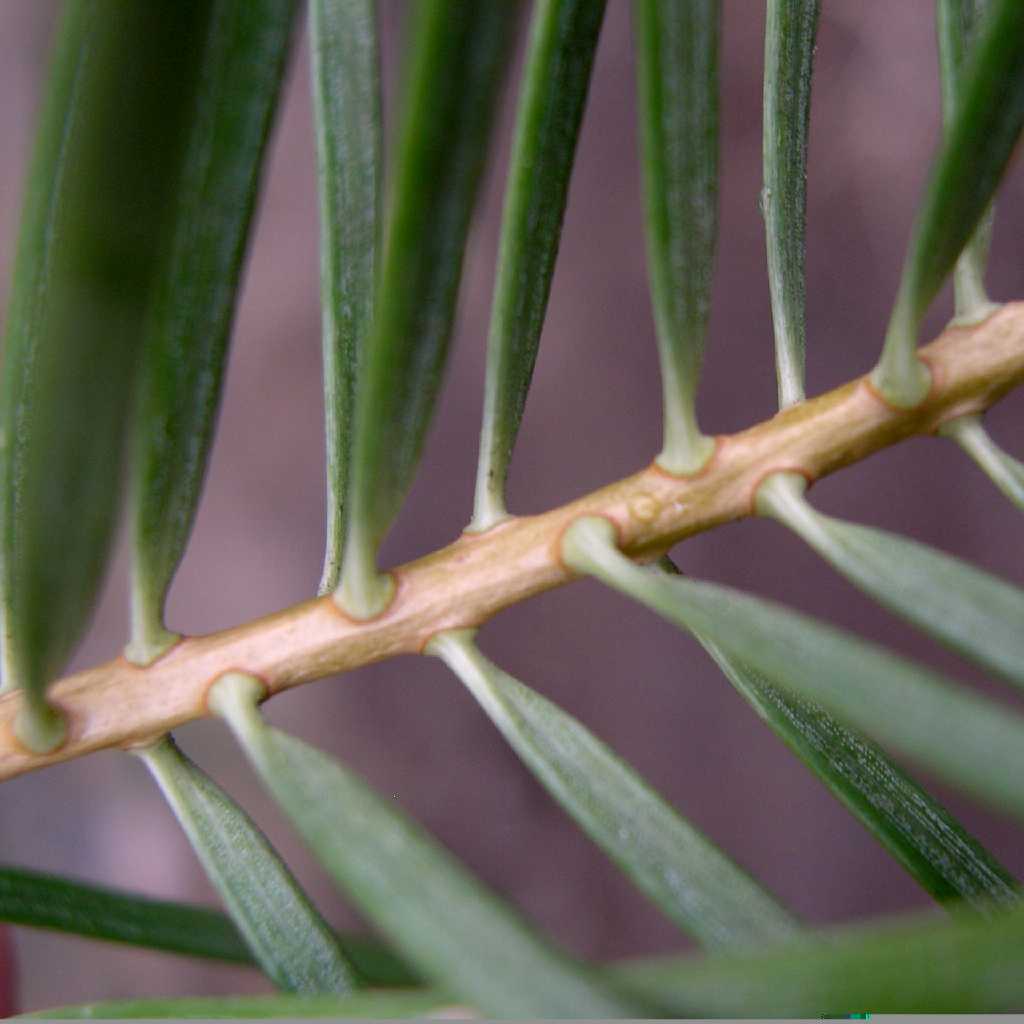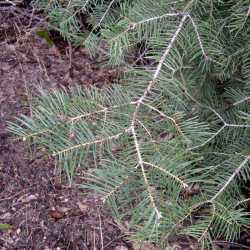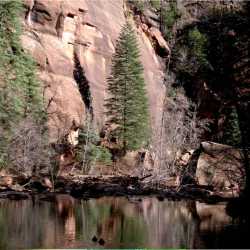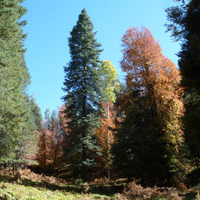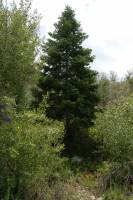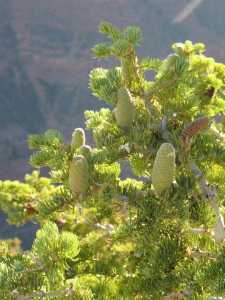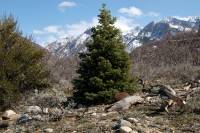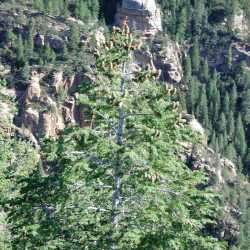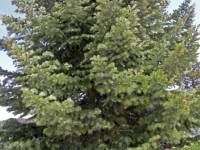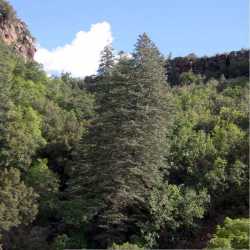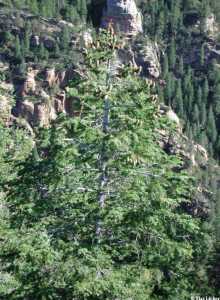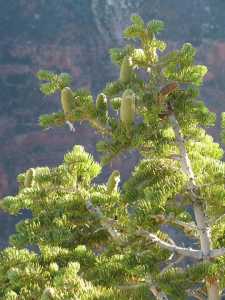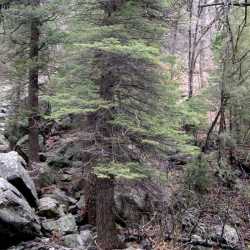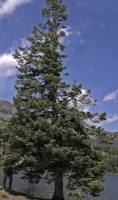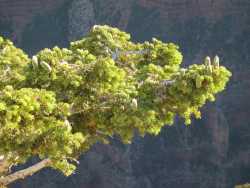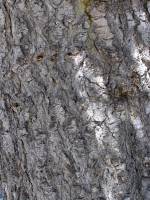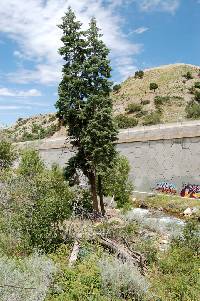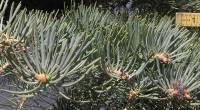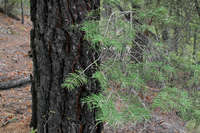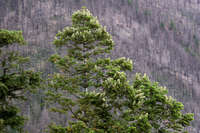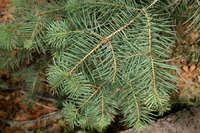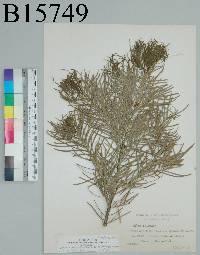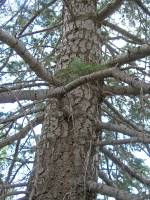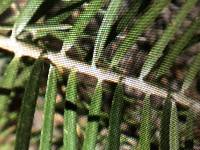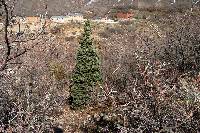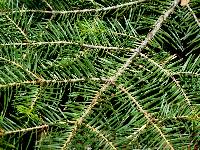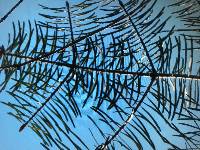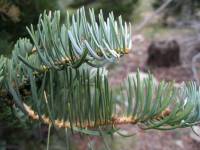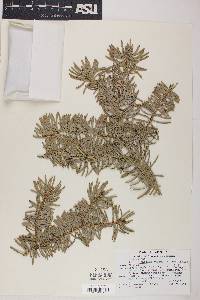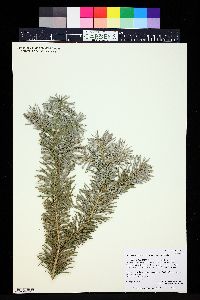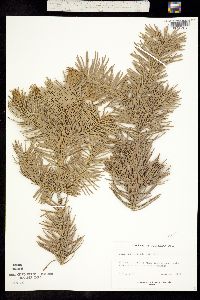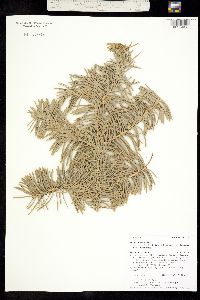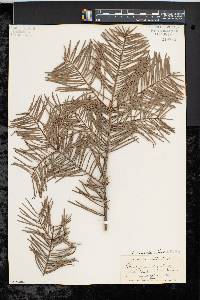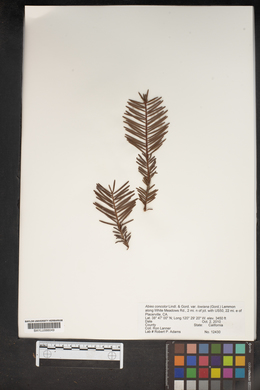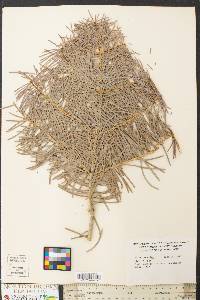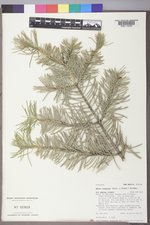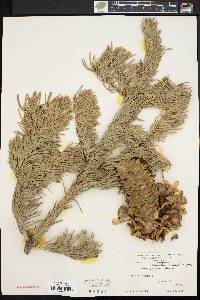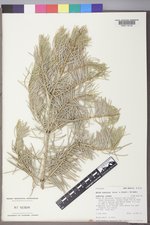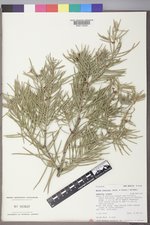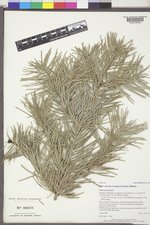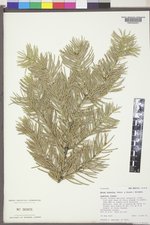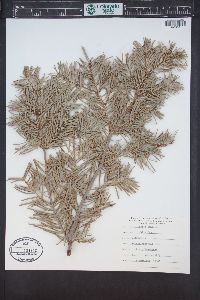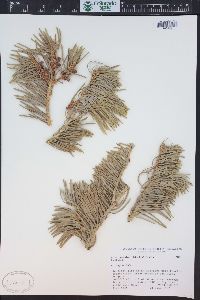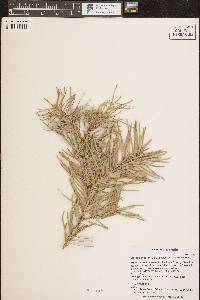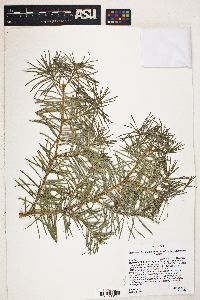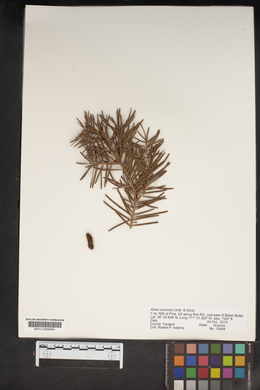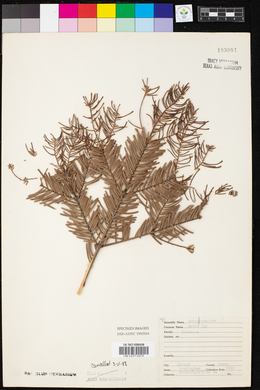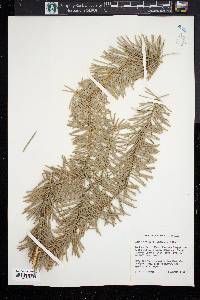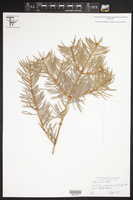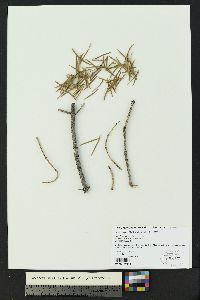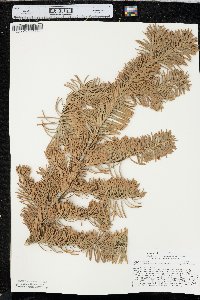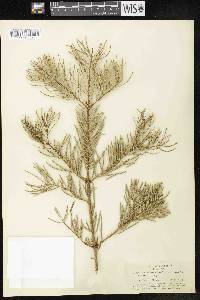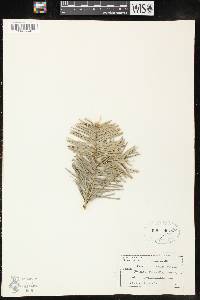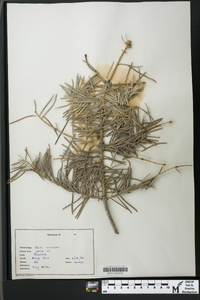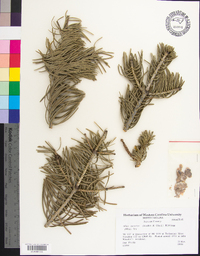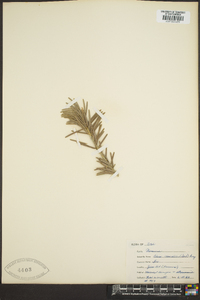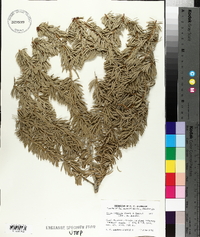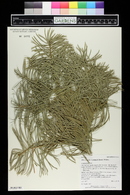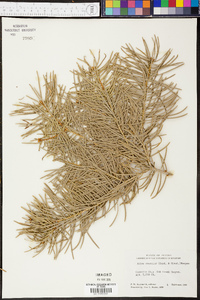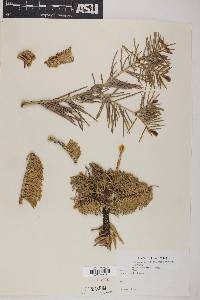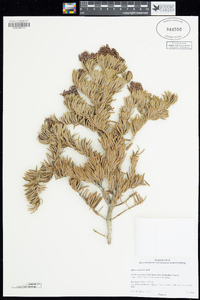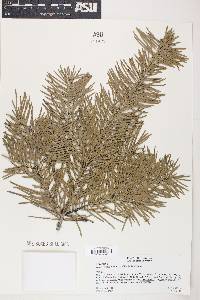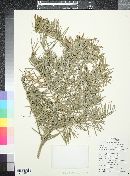
|
|
|
|
Family: Pinaceae
White Fir, more...balsam fir, colorado fir, concolor fir, silver fir, white balsam (es: pino blanco, pinabete)
[Abies concolor var. bajacalifornica, moreAbies concolor var. martinezii Silba, Abies lowiana var. viridula Debreczy & Rácz, Picea concolor Gordon, Pinus concolor (Gordon) Parl.] |
Trees to 40m; trunk to 0.9m diam.; crown spirelike. Bark gray, thin, smooth, with age thickening (to 18cm) and breaking into deep longitudinal furrows, often revealing yellowish inner periderm, appearing 'corky.' Branches diverging from trunk at right angles, the lower often spreading and drooping in age; twigs mostly opposite, glabrous or with yellowish pubescence. Buds exposed, either yellowish and nearly conic (when large) or brownish and nearly globose (when small), resinous, apex rounded to pointed; basal scales equilaterally triangular, glabrous, not resinous, margins entire, apex sharp-pointed. Leaves 1.5--6cm ´ 2--3mm, mostly 2-ranked, flexible, proximal portion ±straight; cross section flat, sometimes slightly grooved adaxially; odor pungent, frequently camphorlike; abaxial surface glaucous, with 4--7 stomatal rows on each side of midrib; adaxial surface grayish green, glaucous, with (7--)12(--18) stomatal rows at midleaf, these usually fewer toward leaf apex; apex usually rounded, sometimes acute or notched; resin canals small, near margins and abaxial epidermal layer. Pollen cones at pollination ± red, purple, or ± green. Seed cones cylindric, 7--12 ´ 3--4.5cm, olive-green, sessile, apex round; scales ca. 2.5--3 ´ 3--3.5cm, pubescent; bracts included. Seeds 8--12 × 3mm, body tan; wing about twice as long as body, tan with rosy tinge; cotyledons 5--7. 2 n =24. Coniferous forests; 1700*--3400m; Ariz., Calif., Colo., Idaho, Nev., N.Mex., Oreg., Utah; Mexico in Baja California, Sonora. *Specimens in Oregon have been reported in the range of 400 to 800 meters. In northern Utah, scattered low elevation trees have been found in Salt Lake and Utah Cos. in the range of 1475 to 1525 meters, and in the southern half of the state, there are records of trees in San Juan and Washington Cos. in the range of 1225 to 1300 meters.
Common Name: white fir Duration: Perennial Nativity: Native Lifeform: Tree General: Evergreen tree, 10-40 m (30-130 ft) tall; trunk up to 1 m in diameter; crown spire-like, becoming more rounded with maturity; branches oriented perpendicular to the trunk, the lower ones often spreading to drooping as tree matures; twigs opposite, yellowish green, with slightly depressed circular leaf scars, somewhat puberulent when young, becoming glabrous with age; buds somewhat conic to blunt-shaped, yellowish to brownish, resinous. Gray, smooth, with resin blisters on young trees; dark gray, thick, and deeply furrowed on mature trees. Needles: Needles, spirally arranged but appearing 2-ranked, solitary, linear, flat, 1.5-6 cm long, those of the lower branches 3-6 cm long, pale bluish green to gray-green; both surfaces with white stomatal lines, the stomatal lines on the abaxial (lower) surface separated by a raised midvein; apex blunt, sometimes acute, seldom notched; needles with a pungent, camphor-like odor. Cones: Male and female cones on same tree; male (pollen) cones mostly 6-9 mm long, dark red, sometimes yellow; female (seed) cones oblong-cylindric, 7-12 cm long, yellowish green broadly winged. Ecology: Rocky slopes, coniferous forests; 1500-3400 m (4900-11200 ft); Apache, Coconino, Mohave, and Yavapai counties; western and southwestern U.S., northern Mexico. Notes: Abies bifolia is distinguished from A. concolor by the corky bark on mature trees, shorter needles on the lower branches, and dark purple female (seed) cones. Young white firs are highly susceptible to fire, but mature trees are moderately tolerant. This is an aggressive, shade-tolerant species whose seeds require cold, moist stratification for germination. Seedlings establish best in partial shade, but once established, grow best in full sun. White fir trees provide valuable cover and habitat for many wildlife species, including nest sites and winter roosts for birds. Ungulates eat new growth in spring, but the mature foliage is not particularly palatable to grazing animals. Porcupines eat the bark, and rodents will feed on cambial tissue, seedlings, and leaders near snow level. Birds and rodents eat white fir seeds. It is an important plant to the Hopi, who use fresh pitch and bark for a variety of medicinal purposes. Paiutes use this plant as a dermatological aid, applying a poultice of fresh pitch to cuts. A decoction of needles and bark resin is used for pulmonary troubles. The resin is also used to treat venereal disease. White fir is a commercially important Christmas tree, and is also used for fuel, lumber, pulpwood, and veneer. Synonyms: Abies grandis var. concolor, Picea concolor Editor: Springer et al |
|
|
|

